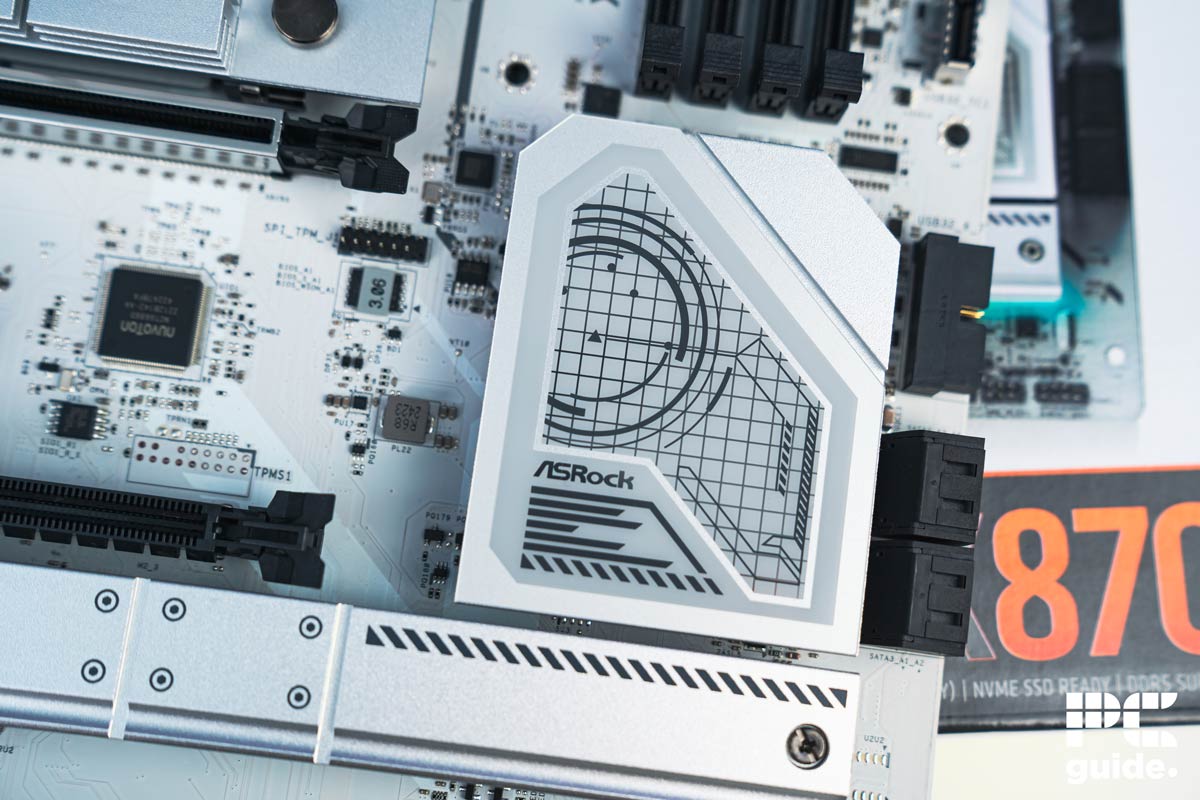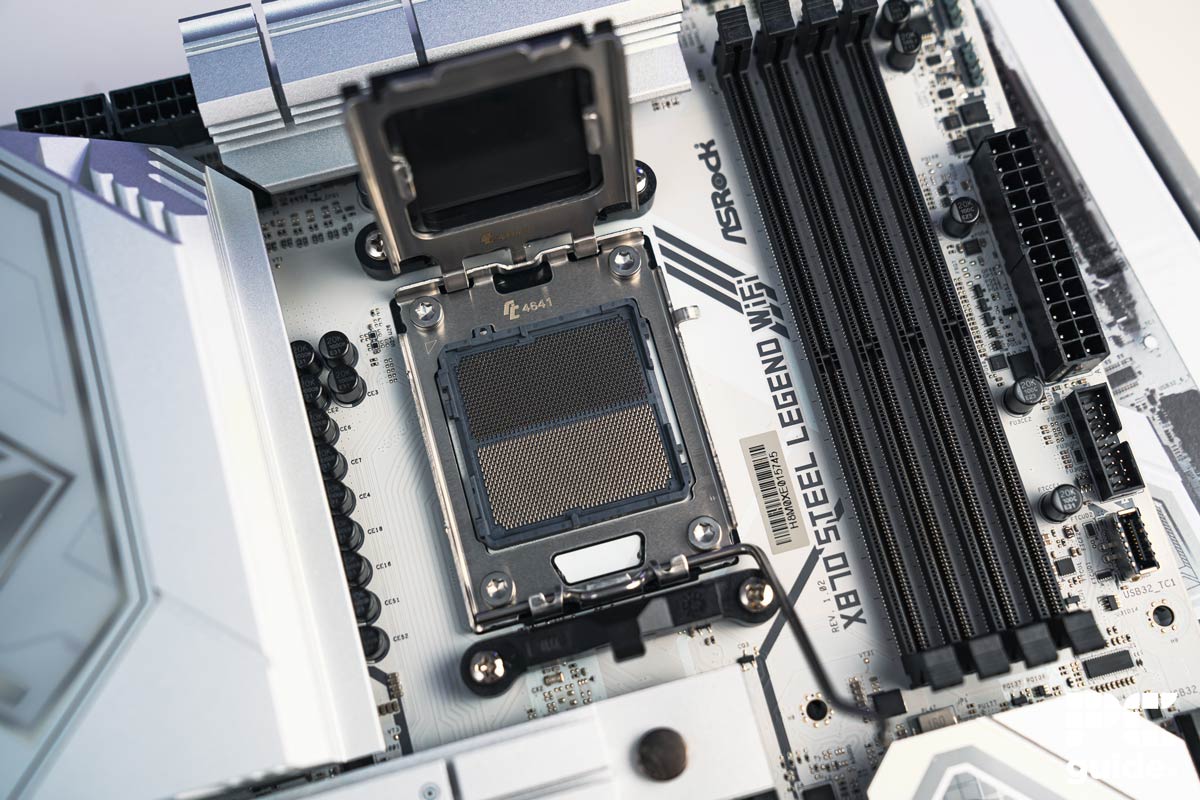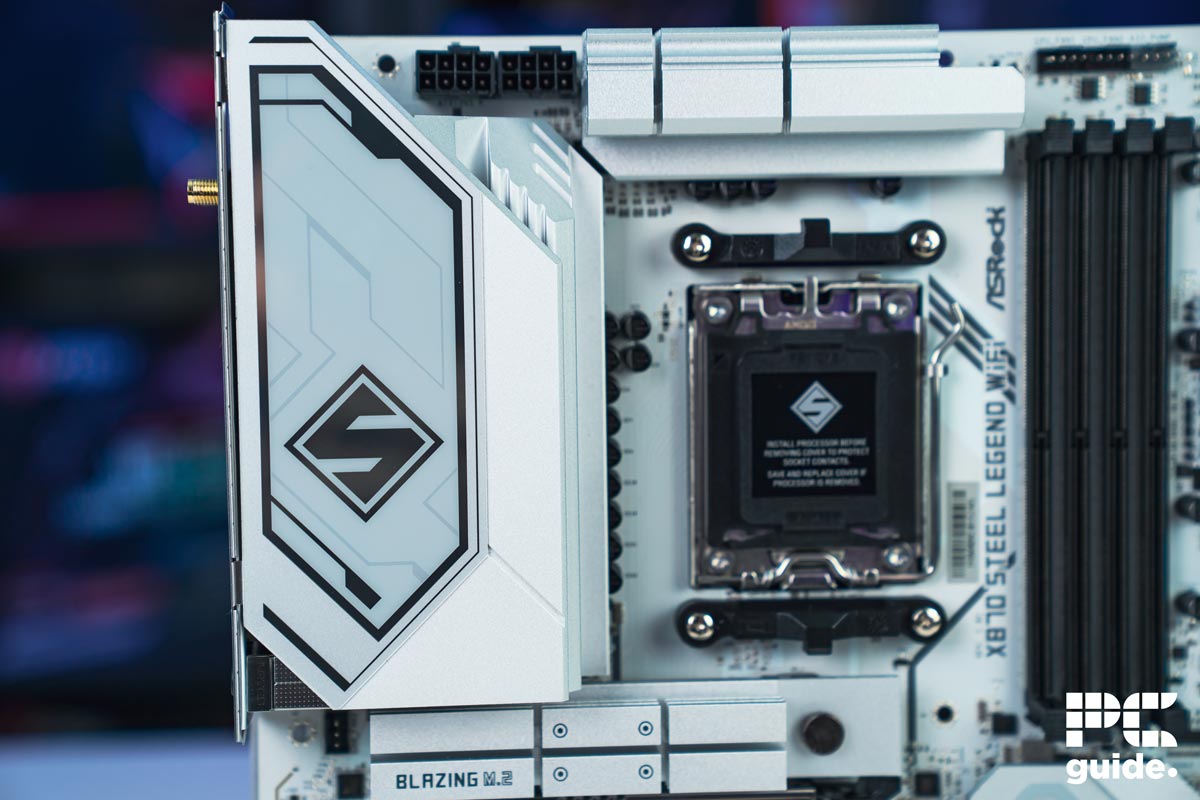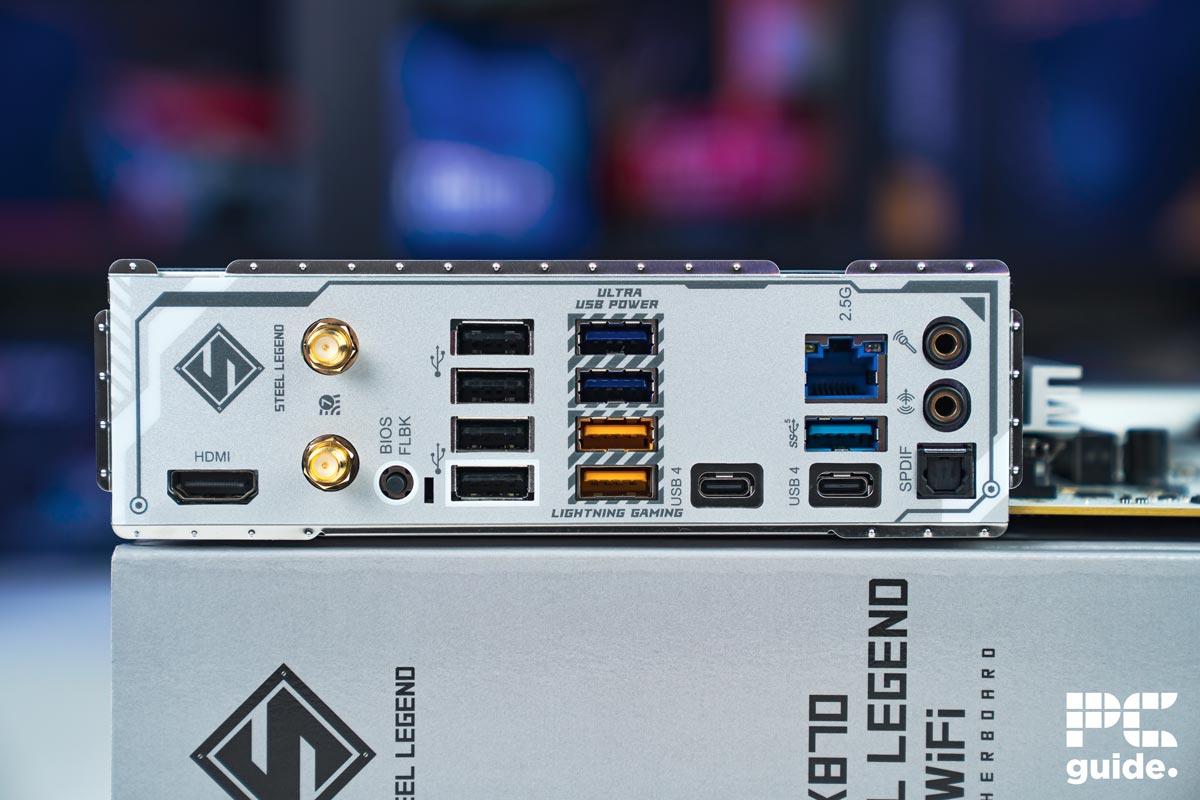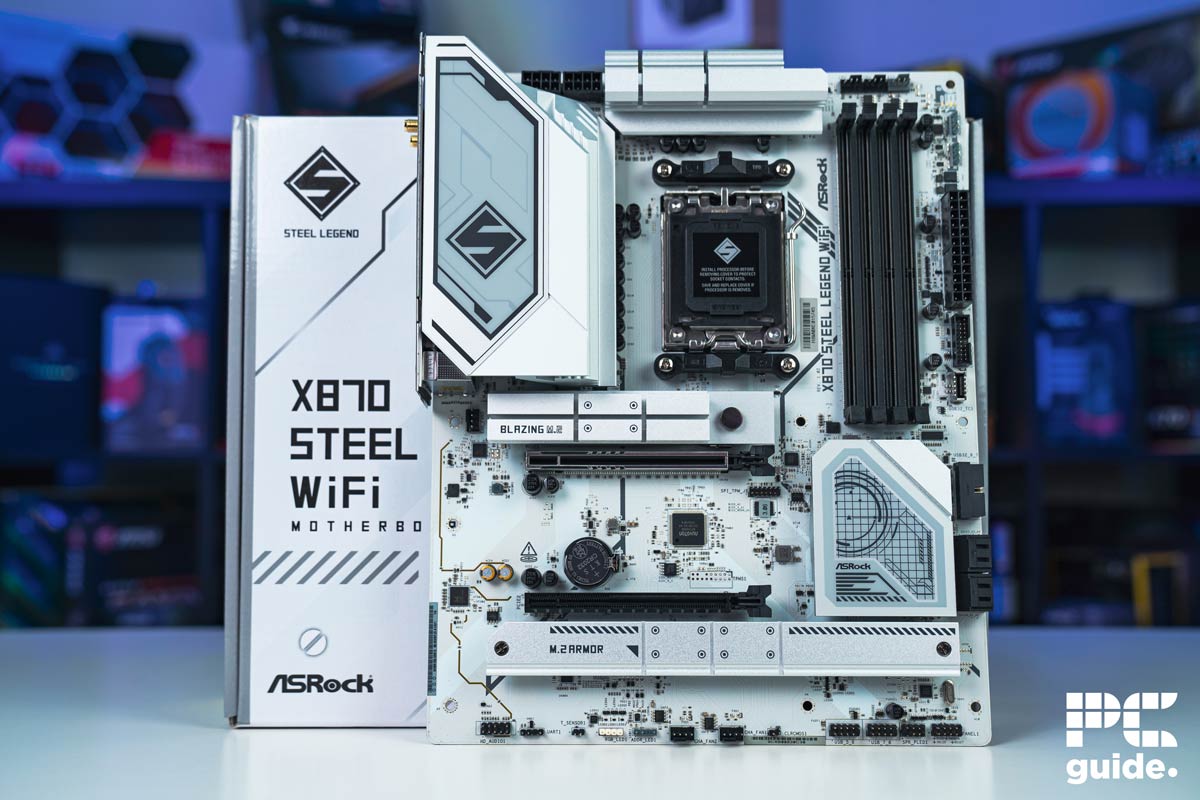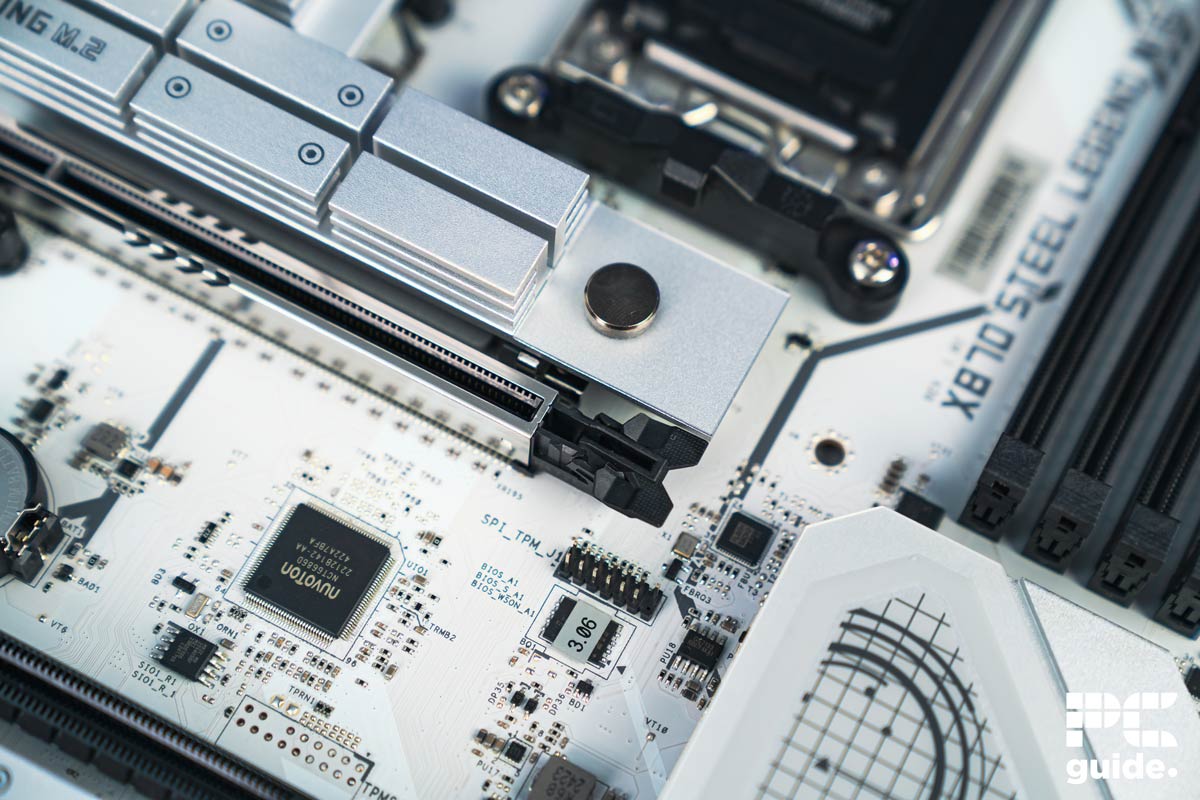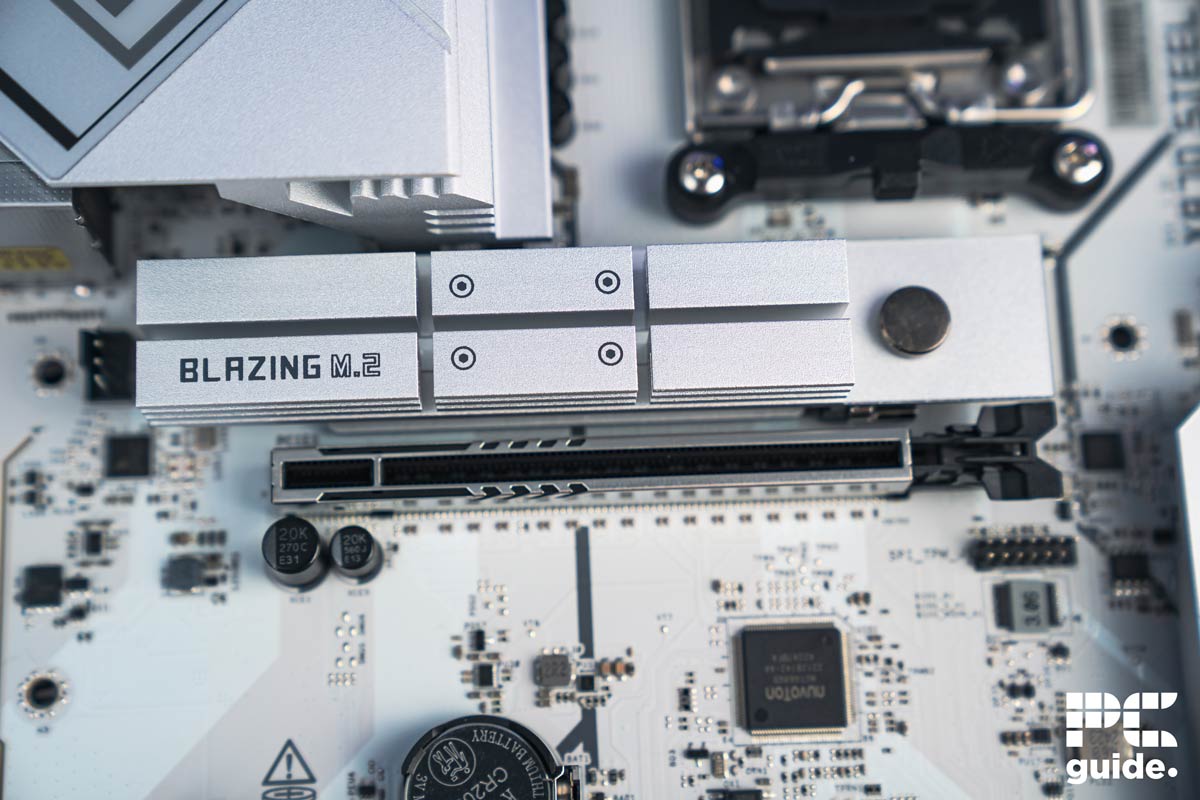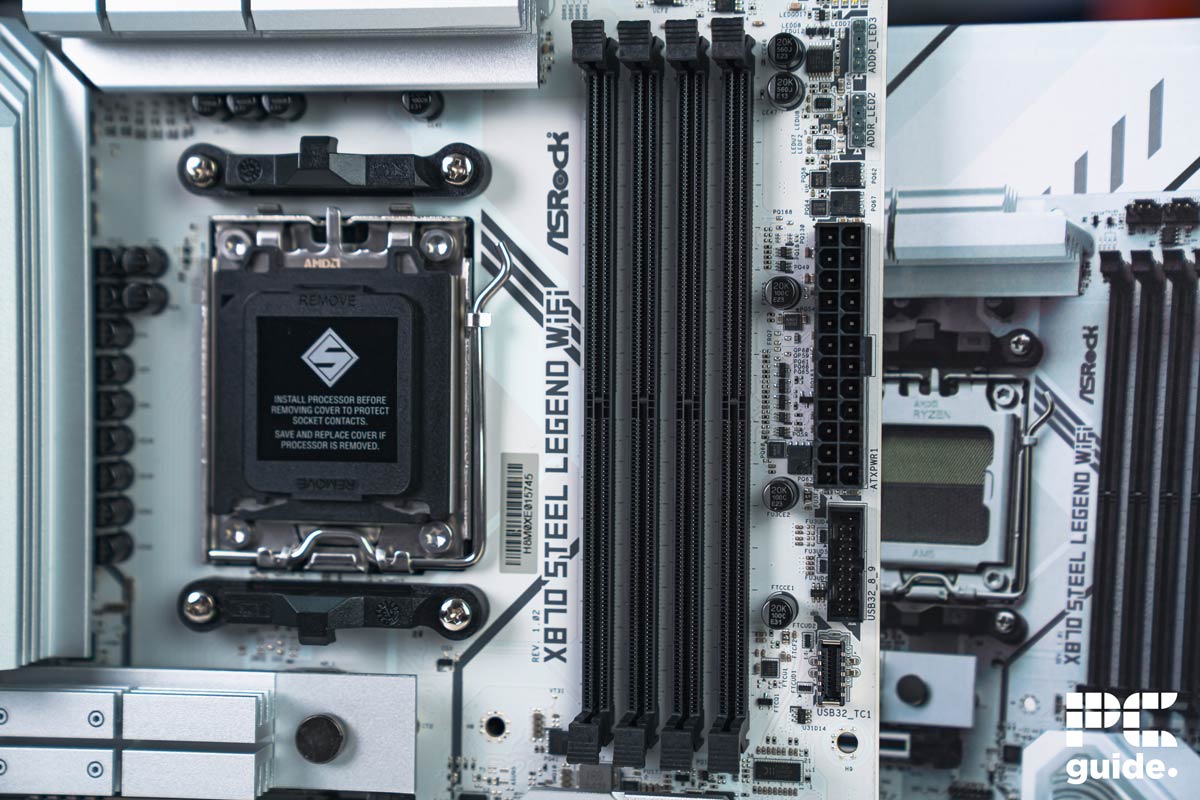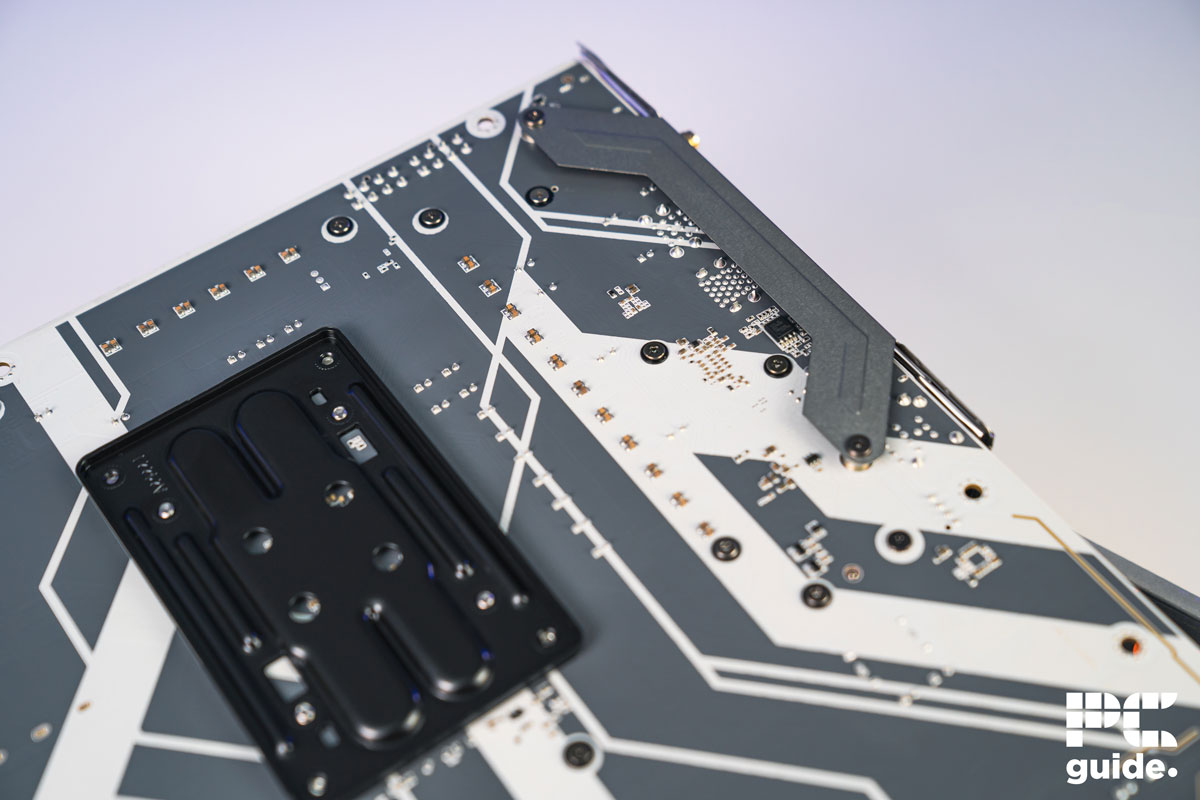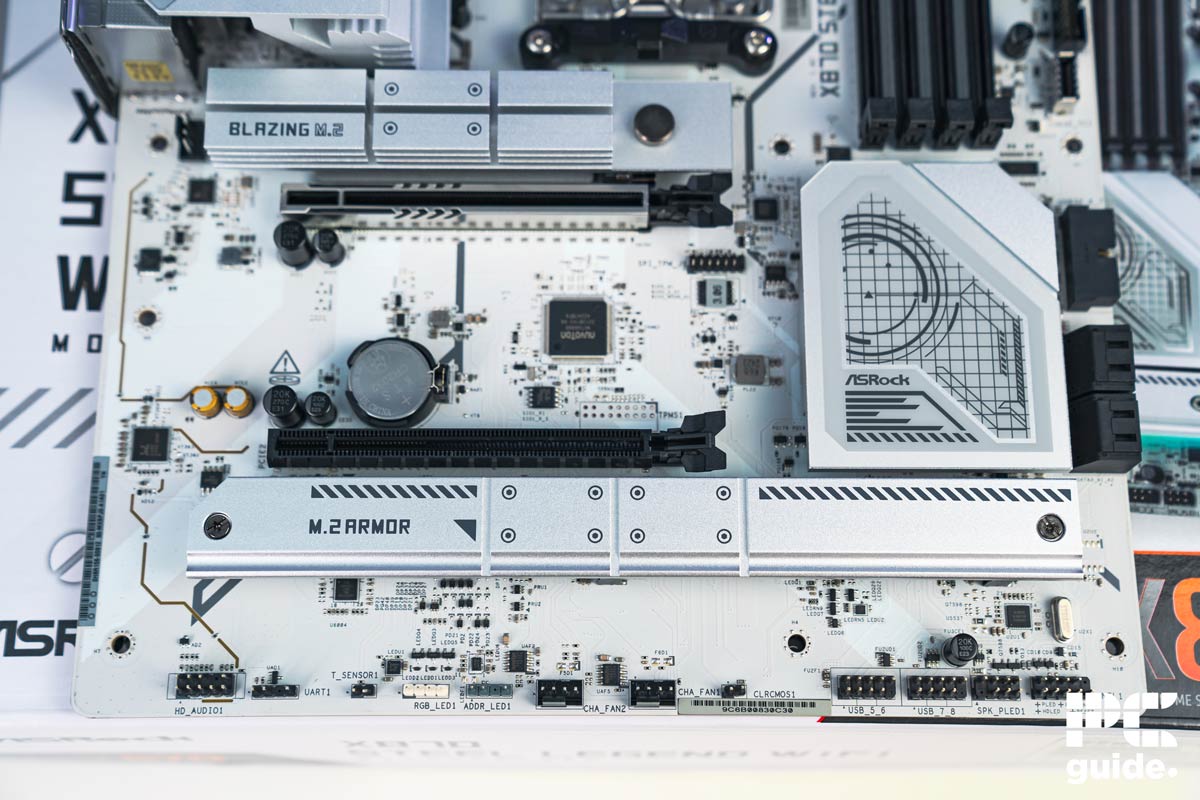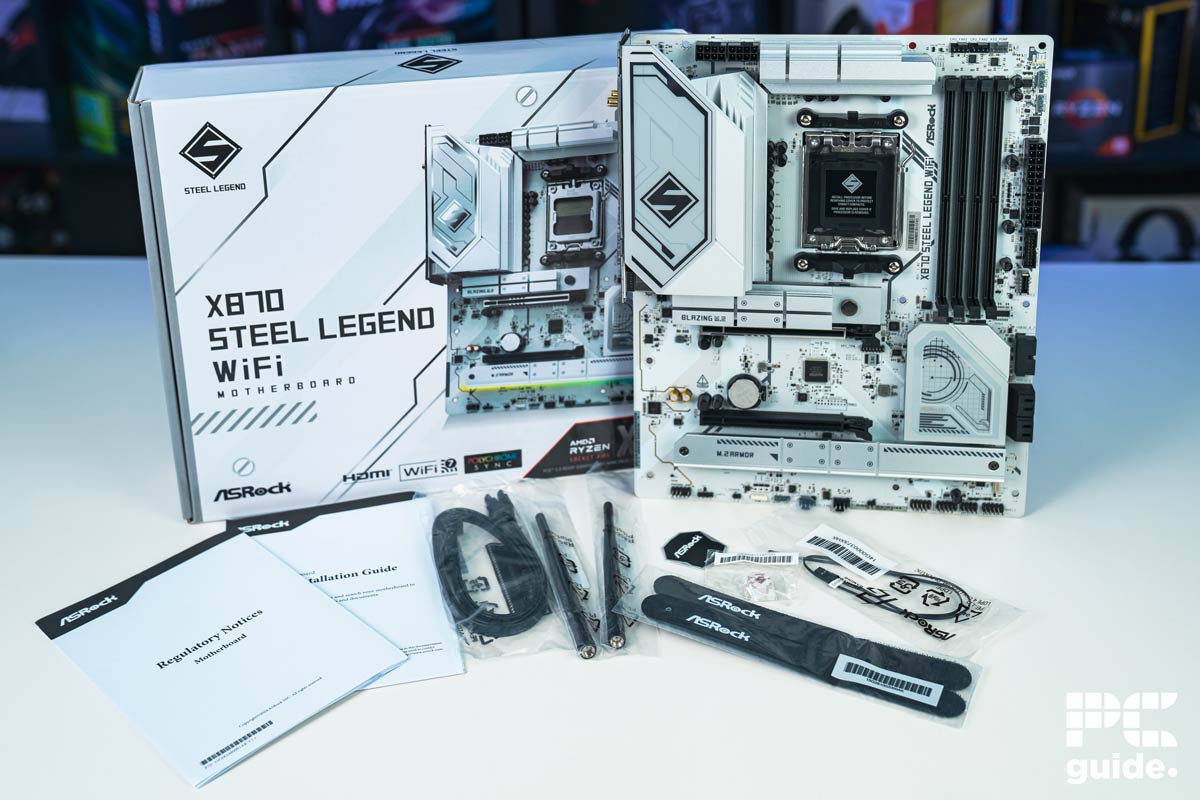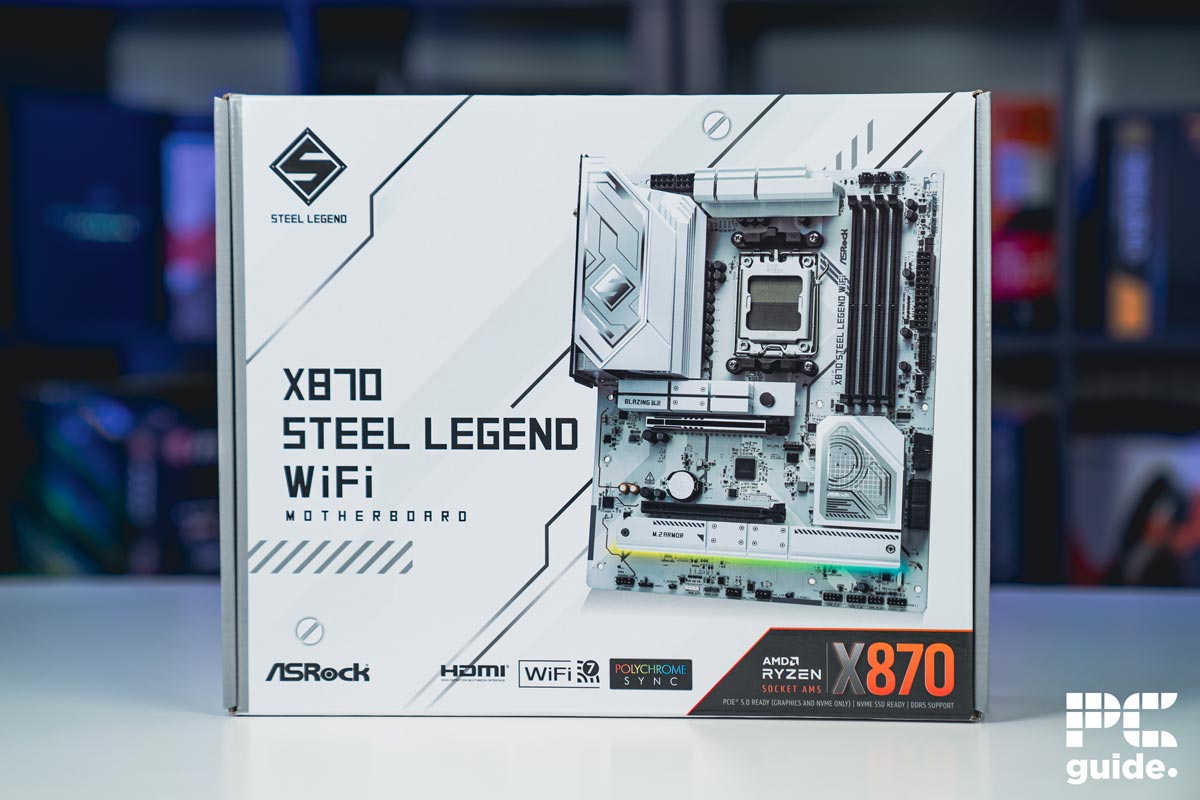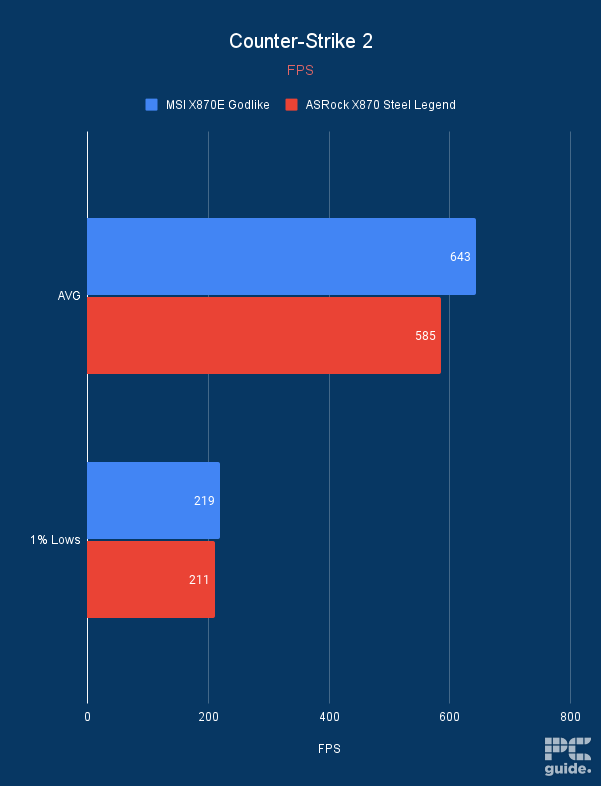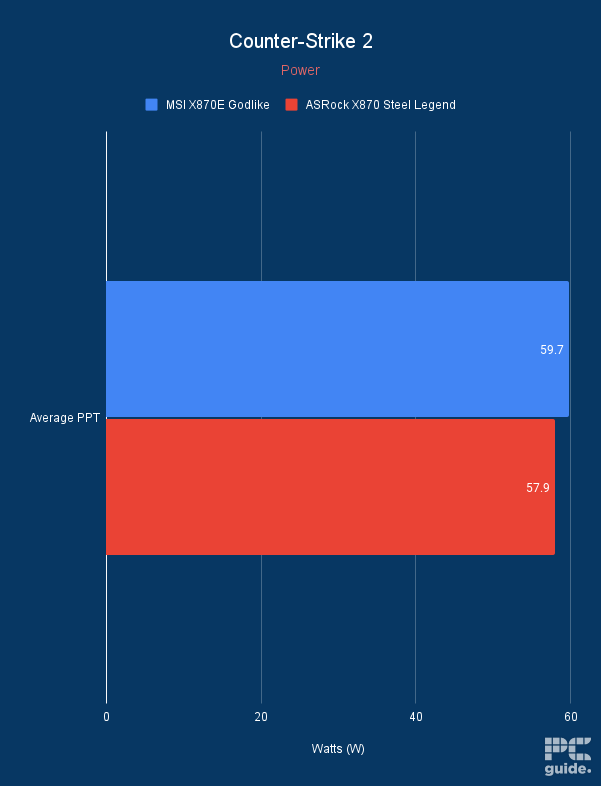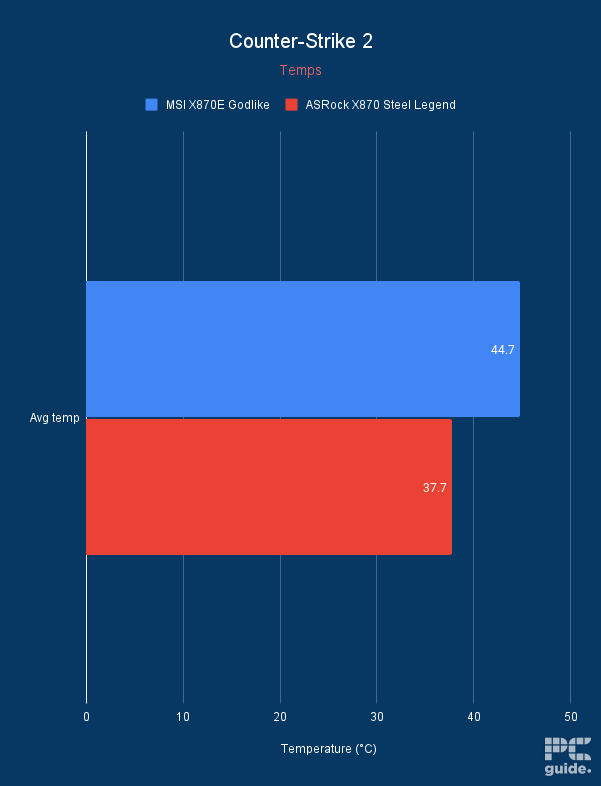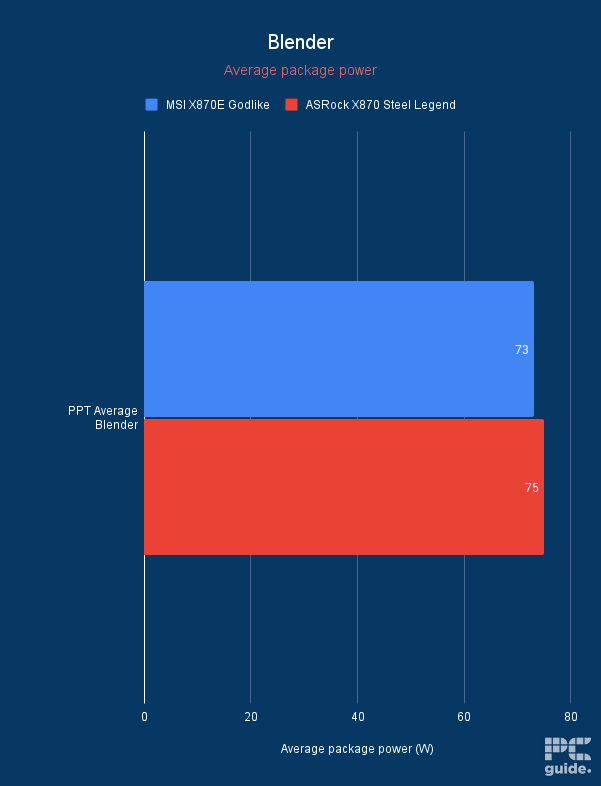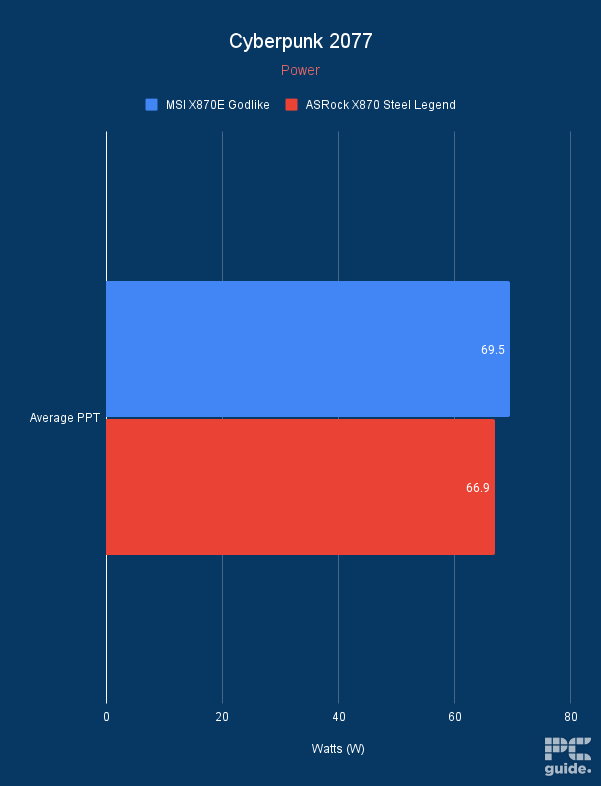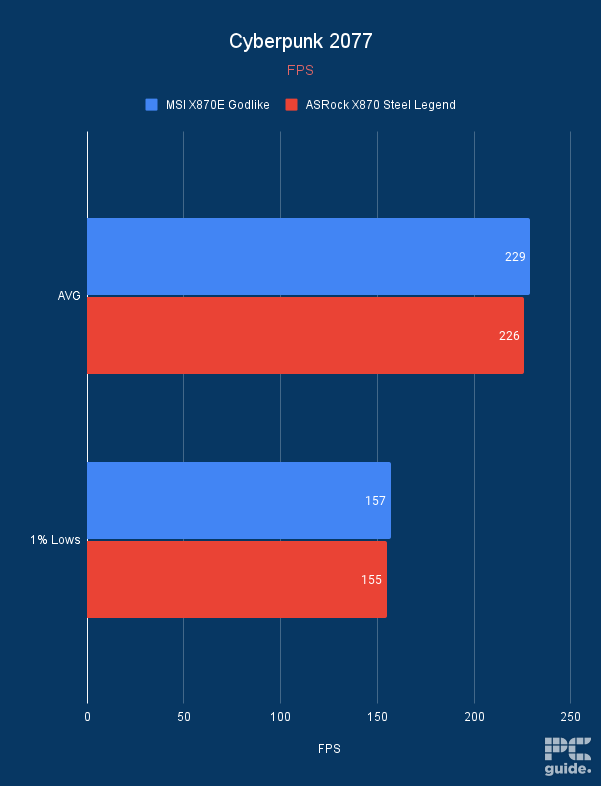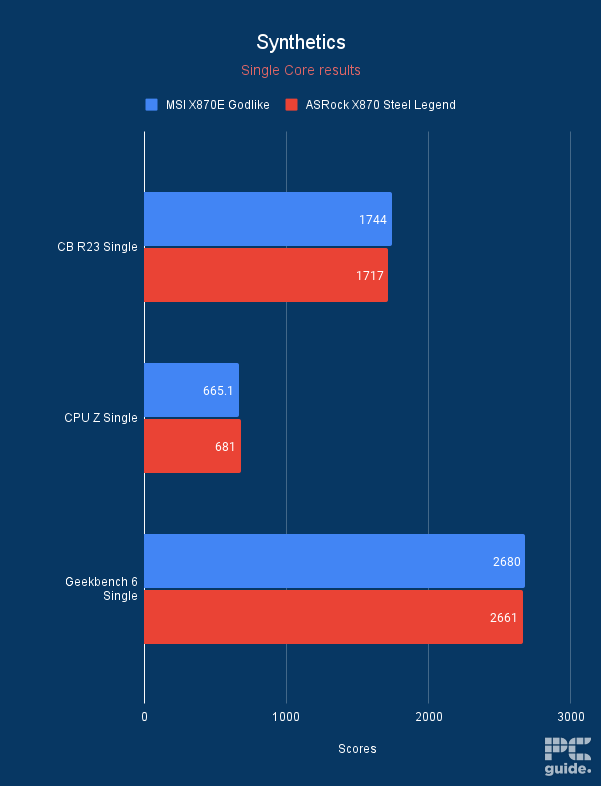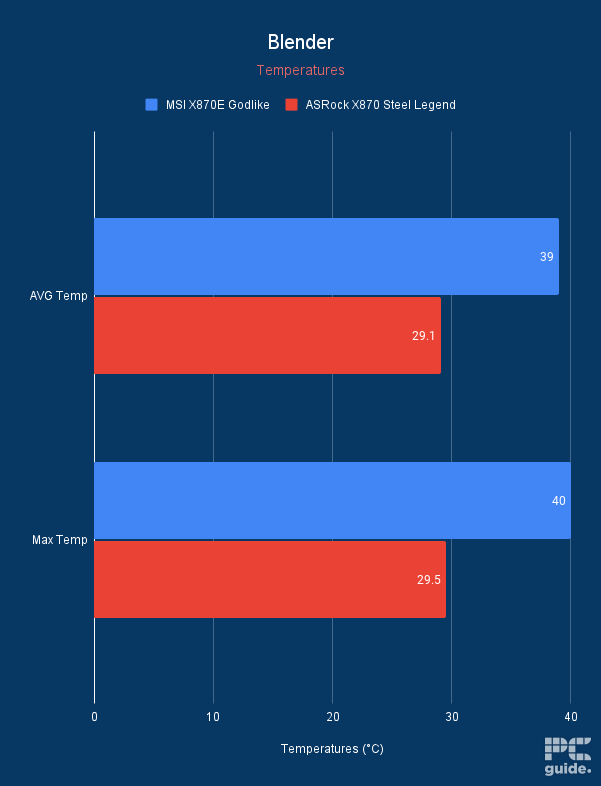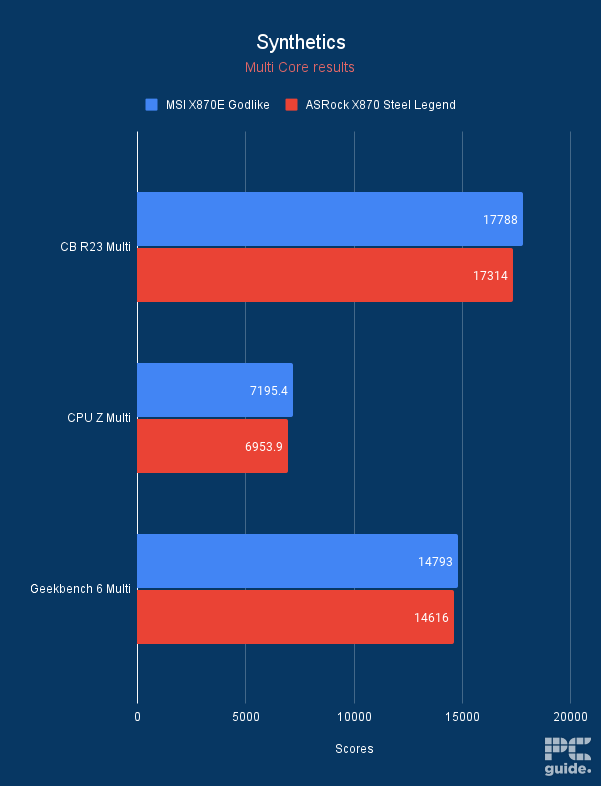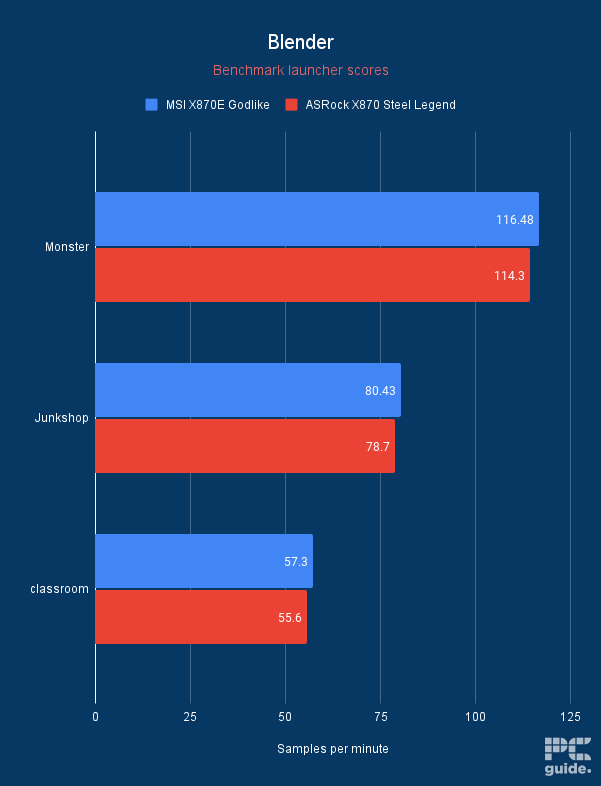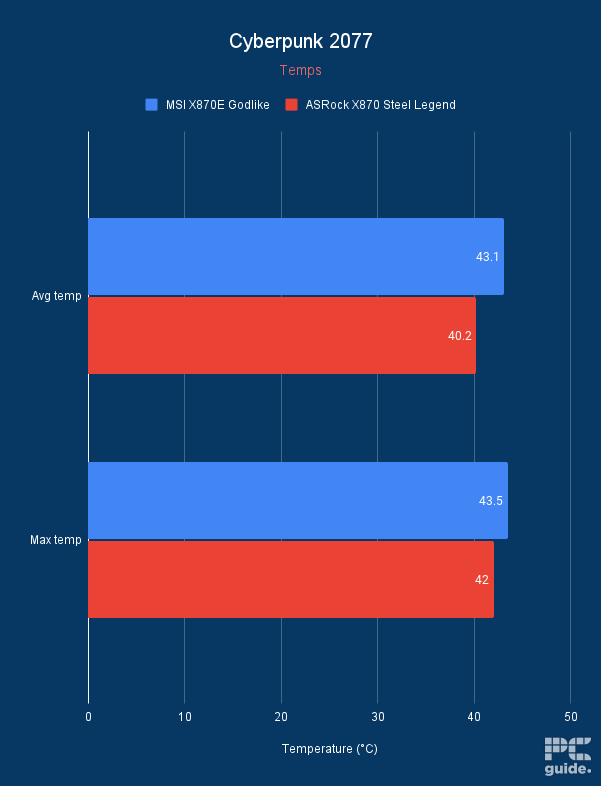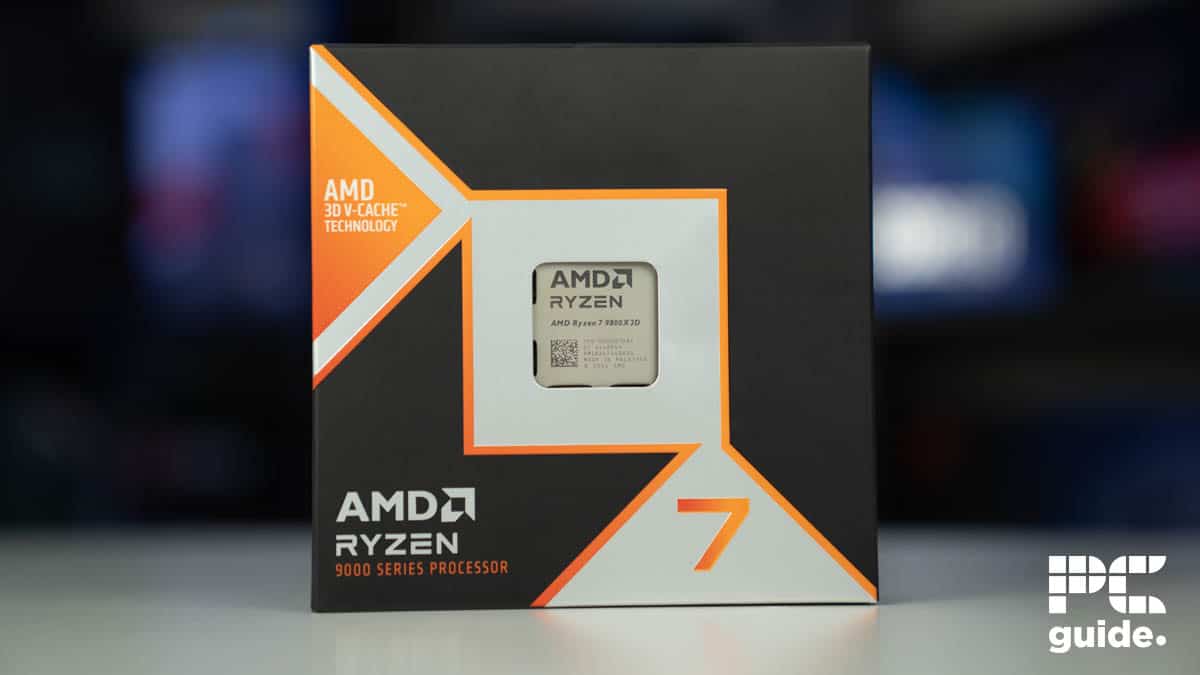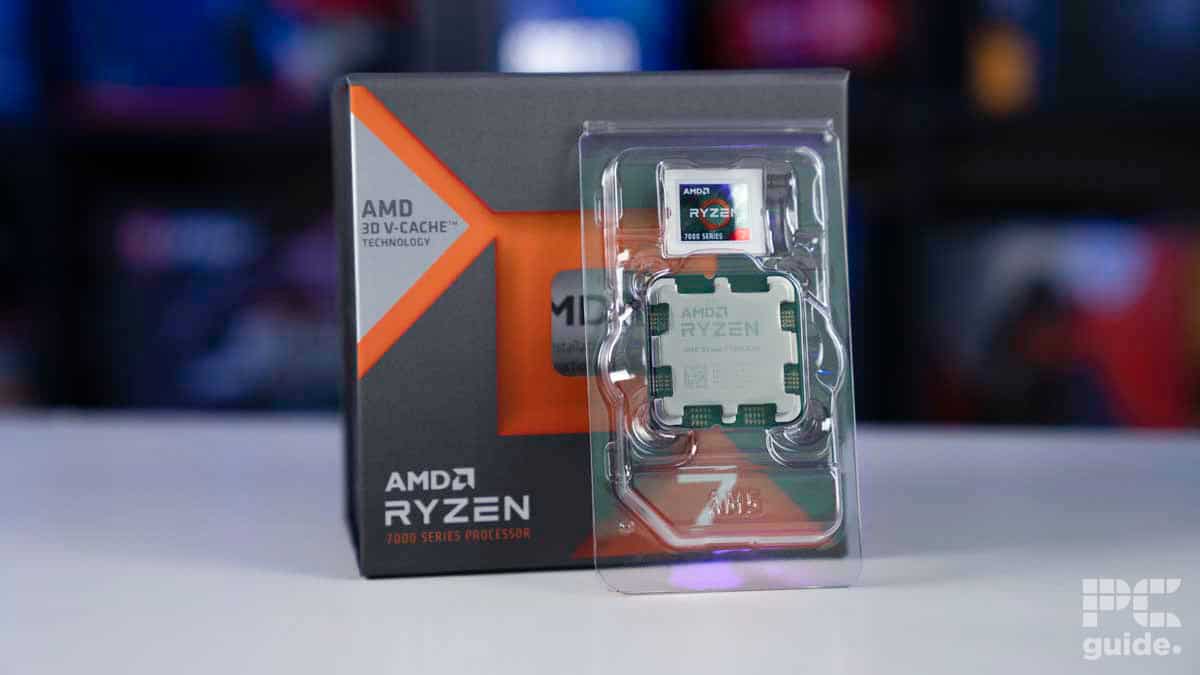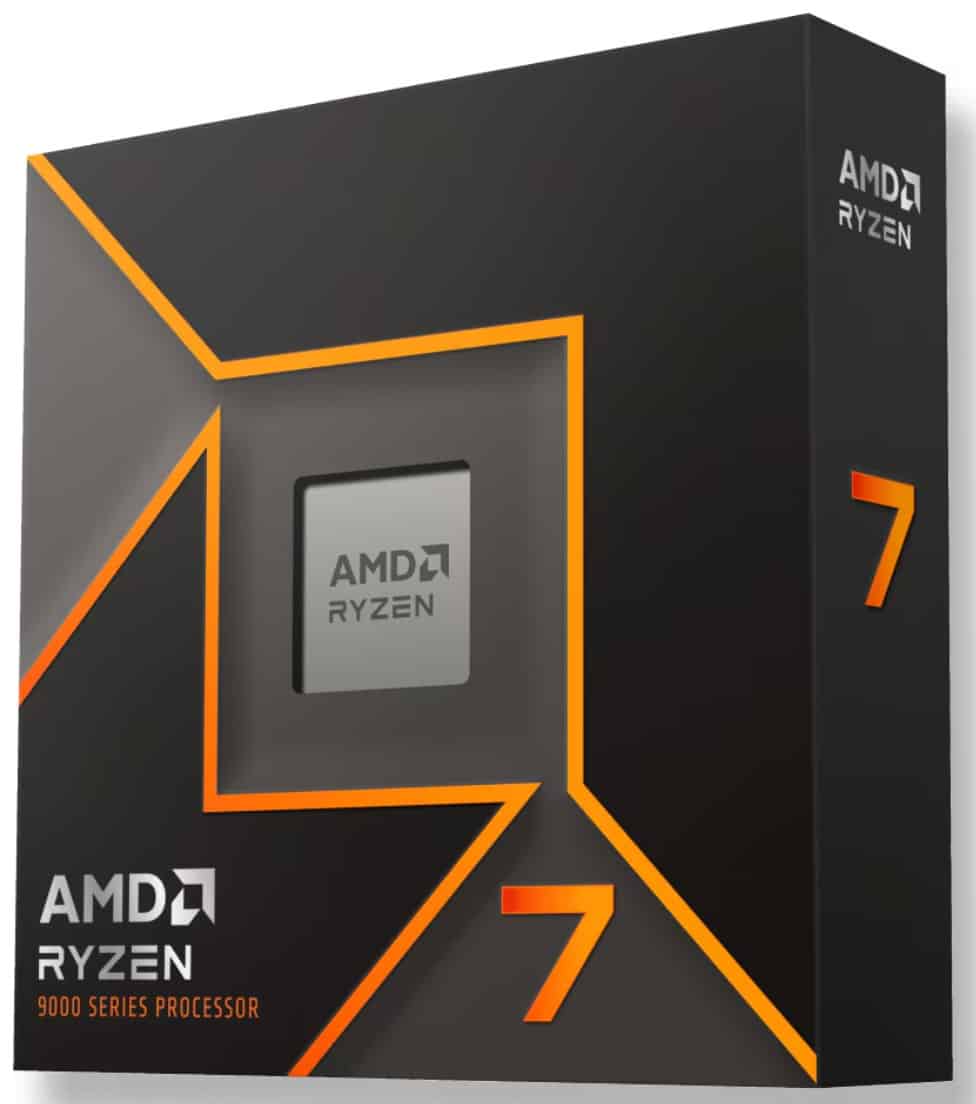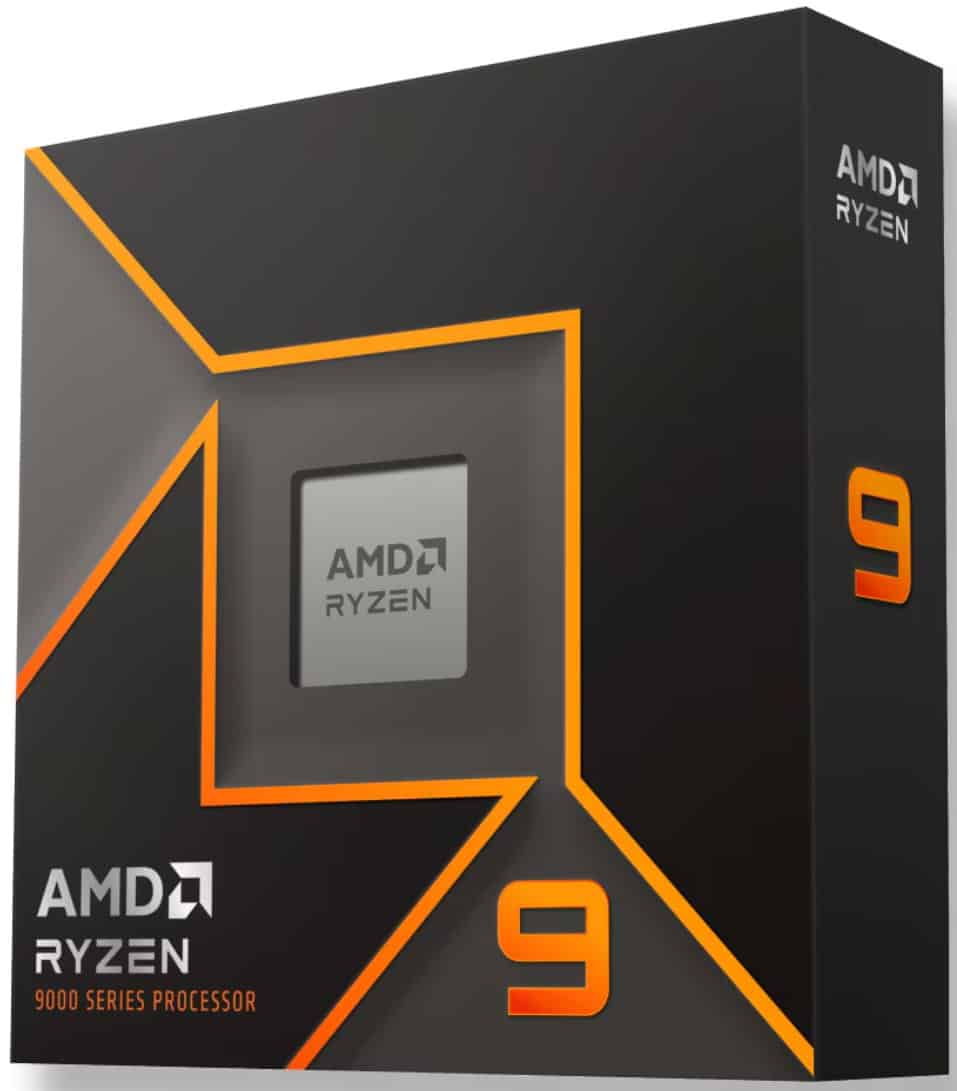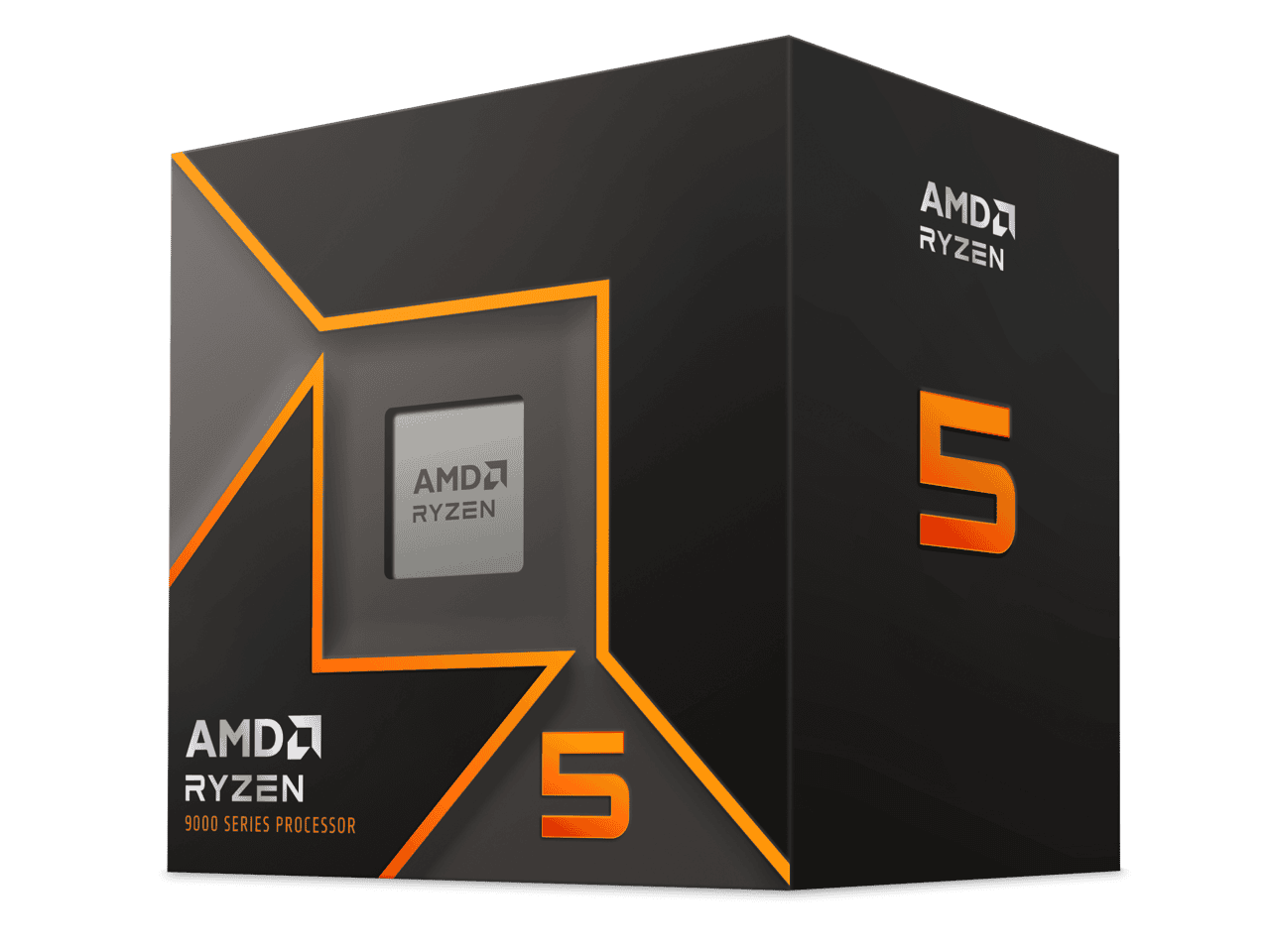ASRock X870 Steel Legend review: simple, effective, and affordable
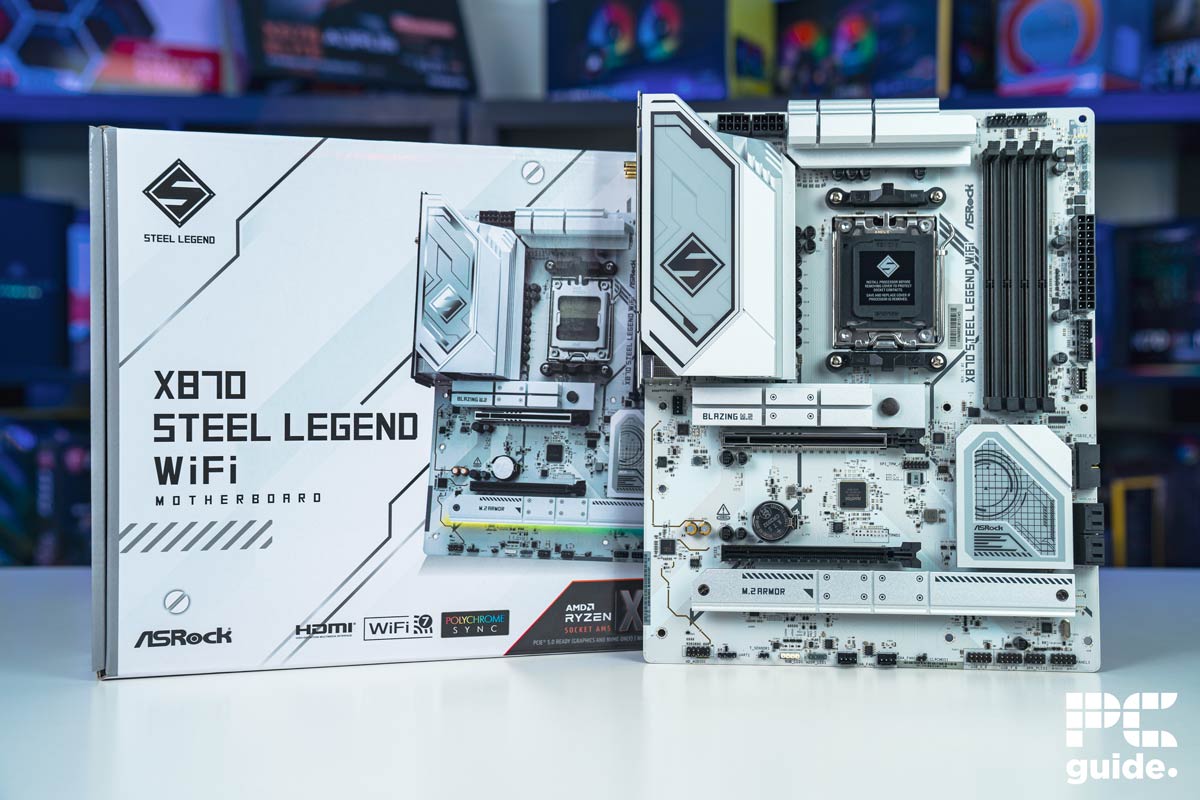
Table of Contents
When it comes to picking out a top AM5 motherboard, the latest generation of chipsets is the best place to start. At the time of writing, that is the X870 generation. I got to get my hands on one of ASRock’s options, the X870 Steel Legends, which I must admit was a welcome change to some of the astronomically priced motherboards that I’ve reviewed recently. When it comes to building a PC, not everyone has enormous budgets, so I was keen to see how this more affordable alternative actually performed. Whether you’re trying to keep costs lower, or stepping into the world of PC building, here’s everything you need to know about the X870 Steel Legend.

- Socket: AM5 (LGA 1718)
- Chipset: X870
- Form factor: ATX, 305x244mm
- PCIe version: Gen 5 PCIe and Gen 5 NVMe
- Memory speed: Up to 8000+(OC)
- Memory capacity: 256GB DDR5
The ASRock X870 Steel Legend is a great value pick, at least in the X870 range. It still provides a wide range of features and opportunities to get the most out of your hardware, and with next-generation connectivity for wireless and PCIe, it is a future-proof choice, even if it’s a minimal showing. There’s even some overclocking potential for CPUs and RAM to boost their performance.
While I would have loved to see more EZ DIY options on the board, it would take a lot more than that to deter me from recommending this as an excellent budget X870 option.
- A more reasonable X870 offering
- Lots of USB ports, including fast USB 4
- Latest spec PCIe and wireless generation spec
- Clean and simple white design
- Lacks a debug code display
- No EZ PCIe latch
- LEDs are not diffused on the bottom so quite harsh when viewed at an angle
Design and usability
Compared to the other top motherboards we have looked at, the Steel Legend keeps things simple. You’ll find all the basics, but nothing to excessive – all to be expected at this price-range. One thing that caught my eye straight away was its fairly unique color scheme, that may divide opinion depending on your taste. Personally, I thought it looks great, and I could definitely see this working well in the right build. This was a nice surprise, considering this is a ‘budget’ motherboard.
Prime Day is finally here! Find all the biggest tech and PC deals below.
- Sapphire 11348-03-20G Pulse AMD Radeon™ RX 9070 XT Was $779 Now $739
- AMD Ryzen 7 7800X3D 8-Core, 16-Thread Desktop Processor Was $449 Now $341
- ASUS RTX™ 5060 OC Edition Graphics Card Was $379 Now $339
- LG 77-Inch Class OLED evo AI 4K C5 Series Smart TV Was $3,696 Now $2,796
- Intel® Core™ i7-14700K New Gaming Desktop Was $320.99 Now $274
- Lexar 2TB NM1090 w/HeatSink SSD PCIe Gen5x4 NVMe M.2 Was $281.97 Now $214.98
- Apple Watch Series 10 GPS + Cellular 42mm case Smartwatch Was $499.99 Now $379.99
- ASUS ROG Strix G16 (2025) 16" FHD, RTX 5060 gaming laptop Was $1,499.99 Now $1,274.99
- Apple iPad mini (A17 Pro): Apple Intelligence Was $499.99 Now $379.99
*Prices and savings subject to change. Click through to get the current prices.
Moving onto the more technical aspects of the motherboards, it limits heatsinks and onboard cooling to just the key parts, with the chipset, VRMs, IO, and NVMes all covered with cooling capability. Considering how fast and powerful these components are getting, you want to cool them down and ensure they’re running at their best.
PCIe Gen 5 NVMes receive a lot of power that needs cooling, and the ASRock X870 makes it much easier to work with M.2 sticks. The primary slot is quite thick but easy to use, as it has a toolless design. Pushing back the button releases the heatsink so it can be easily pulled out. Then you can slide in the NVMe and latch it without the need for screws.
However, it leaves off any more of those features, as the bottom NVMe heatsink is back to being screwed on. While also leaving out an EZ PCIe solution, sticking to a standard latch without an extended button to open it from afar. This would be ideal on this motherboard as you have to squeeze your hand in to free your GPU, as the thick heatsink also gets in the way of hitting the latch.
In terms of lighting, you can find some towards the bottom, placed underneath the heatsink. These look great, however, looking at them from the bottom, like I did once on the test bench, is a bit harsh on the eyes, considering it has straight-up diodes without anything to diffuse them. In a typical build, this will likely not cause any issues.
Specifications
| Socket | AM5 (LGA 1718) |
| Chipset | X870 |
| Form Factor | ATX, 305x244mm |
| RAM | 4 x DDR5 DIMM Slots Supports DDR5 ECC/non-ECC, un-buffered memory up to 8000+(OC) Max. capacity of 256GB |
| VRM | 14+2+1 Power Phase, 80A Dr.MOS |
| PCIe | 1x PCIe 5.0 x16 Slot (PCIE1), supports x16 mode 1x PCIe 4.0 x16 Slot (PCIE2), supports x4 mode |
| Storage | 1x M.2 Socket (M2_1), supports type 2280 PCIe Gen5x4 (128 Gb/s) mode 1x M.2 Socket (M2_2), supports type 2230/2260/2280 PCIe Gen4x4 (64 Gb/s) mode 1x M.2 Socket (M2_3), supports type 2260/2280 PCIe Gen4x4 (64 Gb/s) mode 4x SATA3 6.0 Gb/s Connectors |
| Fan Headers | 2x CPU Fan Connectors (4-pin) 3x Chassis Fan Connectors (4-pin) 1x AIO Pump Fan Connector (4-pin) (Smart Fan Speed Control) |
| Back panel connectivity | 2x Antenna Ports – WiFi 7/BT 5.4 1x HDMI 2.1 Port 1x Optical SPDIF OutPort 2x USB 4 Type-C Ports (40 Gb/s) 3x USB 3.2 Gen1 Type-A Ports 2x USB 3.2 Gen2 Type-A Ports 4x USB 2.0 Ports 1x RJ-45 LAN Port 1x BIOS Flashback Button 1x Line Out Jack (Gold Audio Jack) 1x Microphone Input Jack (Gold Audio Jack) |
The motherboard’s specs give you a good idea of what it offers, which is a lot, even for a more cut-back solution. As the X870 chipset dictates, compared to the X870E, fewer PCIe Gen 5 lanes are on offer, along with fewer fast-speed USB options. You still have USB 4 at least and a few USB 3.2s, but it mostly fills out with USB 2.0s.
The same is true for the PCIe lanes, as only the top slot is capable of Gen 5 speeds, with the other three sticking to Gen 4. The same is true for the M.2 slots, as it’s just the top one on the latest generation, with the other three on Gen 4. That won’t be a problem for most users, as you’ll likely only need one GPU and one fast SSD. Not that those graphics cards with PCIe 5.0 exist yet to fill that slot anyway.
But it still has a future-proof design in mind. It’s not just the onboard connections that are fast and rapid; the wireless connectivity is also up-to-date and current. The motherboard offers WiFi 7 and Bluetooth 5.4 from the get-go, giving you incredible speeds for the future when your network can. The ethernet gets the same treatment, with a 2.5Gbps port in the IO cluster.
There are plenty of onboard connectors to utilize as well. It has a good range of fan connectors, USB-C, two USB 3, a couple USB 2, a few RGB, and a thermistor cable header. So, if you want to, you can get readings and temp control from wherever you want and with the help of fan curve controls.
Performance
| Component | Name |
| CPU | AMD Ryzen 7 7800X3D |
| GPU | RTX 3090 |
| Memory | Corsair Dominator Titanium 64GB DDR5 @ 6800MT/s |
| Motherboard | ASRock X870 Steel Legend |
| CPU cooler | ROG RYUJIN III 360 |
| Power supply | Phanteks 1000W |
| Case | Cooler Master Masterframe |
After reviewing the board and its features, I tested it on my benchmarking rig. I set it up with a top-choice CPU, GPU, and plenty of memory to get the most out of it. I also used a powerful PSU and CPU cooler to give the CPU and set up the most power available. I kept the settings standard as they came, except for turning on EXPO to get the RAM at the proper speeds. I ran various tests to track the board’s temperature, power, and performance and compared it with the X870E Godlike.
The two boards have a clear difference in performance in the synthetic tests. Although only slightly behind, the Steel Legend drops behind with a lower score. Even though it adds more power to the processor, it falls behind by a couple of points in Blender, but it does keep the temperatures in check.
The same performance difference can be seen in the single and multi-core benchmarks I ran. The Steel Legend averaged a few points below the Godlike in the Cinebnech CPU Z and Geekbench range, apart from the odd close call. It’s not a huge difference, as we’ll see in the gaming performance.
In both Cyberpunk 2077 and CS2, the Steel Legend drops a few FPS but still performs well in pure CPU power with low settings at 1080p. However, it further shows the lower power and temp defaults are much smaller than those of the MSI Godlike. But that doesn’t mean you can’t push it more with overclocking potential.
CPU pairings
If you’re after the motherboard and want a good processor pairing, I’ve listed a couple of chips that I think go well with it. Being an X870 motherboard, it is pretty well set up to push the CPU further and extract the most out of it. But without all the extra on top, you’re probably looking at the mid to low-tier gaming options on the AM5 platform.
-
AMD Ryzen 7 9800X3D
- Cores: 8
- Threads: 16
- Boost clock speed: 5.2GHz
- Base clock speed: 4.7GHz
- L3 cache: 96MB
- TDP: 120W
-
AMD Ryzen 7 7800X3D
- Cores: 8
- Threads: 16
- Boost speed : up to 5 GHz
- Base speed: 4.2 GHz
- L3 Cache: 96 MB
- TDP: 120 W
-
AMD Ryzen 7 9700X
- Cores: 8
- Threads: 16
- Boost clock speed: 5.5 GHz
- Base clock speed: 3.8 GHz
- L3 Cache: 32 MB
- TDP: 65 W
-
AMD Ryzen 9 9900X
- Cores: 12
- Threads: 24
- Boost clock speed: 5.6 GHz
- Base clock speed: 4.4 GHz
- L3 Cache: 64 MB
- TDP: 120 W
-
AMD Ryzen 5 9600X
- Cores: 6
- Threads: 12
- Boost clock speed: 5.4 GHz
- Base clock speed: 3.9 GHz
- L3 Cache: 32 MB
- TDP: 65 W
Of course, the first of the lot is the 9800X3D, topping the charts in gaming and performance. Its only downside is some productivity tasks. However, with its reorganization and upgrades from previous X3D processors, it has become a feasible option for those. Of course, it’s limited by its eight cores, but its gaming prowess and improvements in non-gaming capabilities make it an all-rounder to consider.
But it isn’t easy to get hold of, so other options exist that might be a consideration. The 7800X3D is a reasonable alternative; although it does drop back in performance and overclocking potential, it’s still a strong option for gaming. So, it is also a sensible choice for the motherboard.
If an X3D processor is not on your list, plenty more Zen 5 CPUs from AMD fit the bill, such as the 9700X. This is the middle-of-the-pack Ryzen 7 that still has eight cores and comes with a reasonable price. Unless you need the extra cores, the step up to the 9900X might be the better direction to take if productivity is also essential and you have the budget for it.
However, a budget pick for the motherboard is not unreasonable, either, especially as with the expected lifespan of AM5, you can expect to be able to upgrade many years down the line. For now, the 9600X entry choice for the 9000 series is a competent gaming processor.
Conclusion

- Socket: AM5 (LGA 1718)
- Chipset: X870
- Form factor: ATX, 305x244mm
- PCIe version: Gen 5 PCIe and Gen 5 NVMe
- Memory speed: Up to 8000+(OC)
- Memory capacity: 256GB DDR5
Overall, the ASRock X870 Steel Legend provides an excellent deal for the price. At $260/£238, it’s a more affordable option from the range of available X870 boards that won’t cost more than your main PC components. Considering the current-gen specs and speeds, the lack of some nice-to-have features is the only thing that brings it down.

